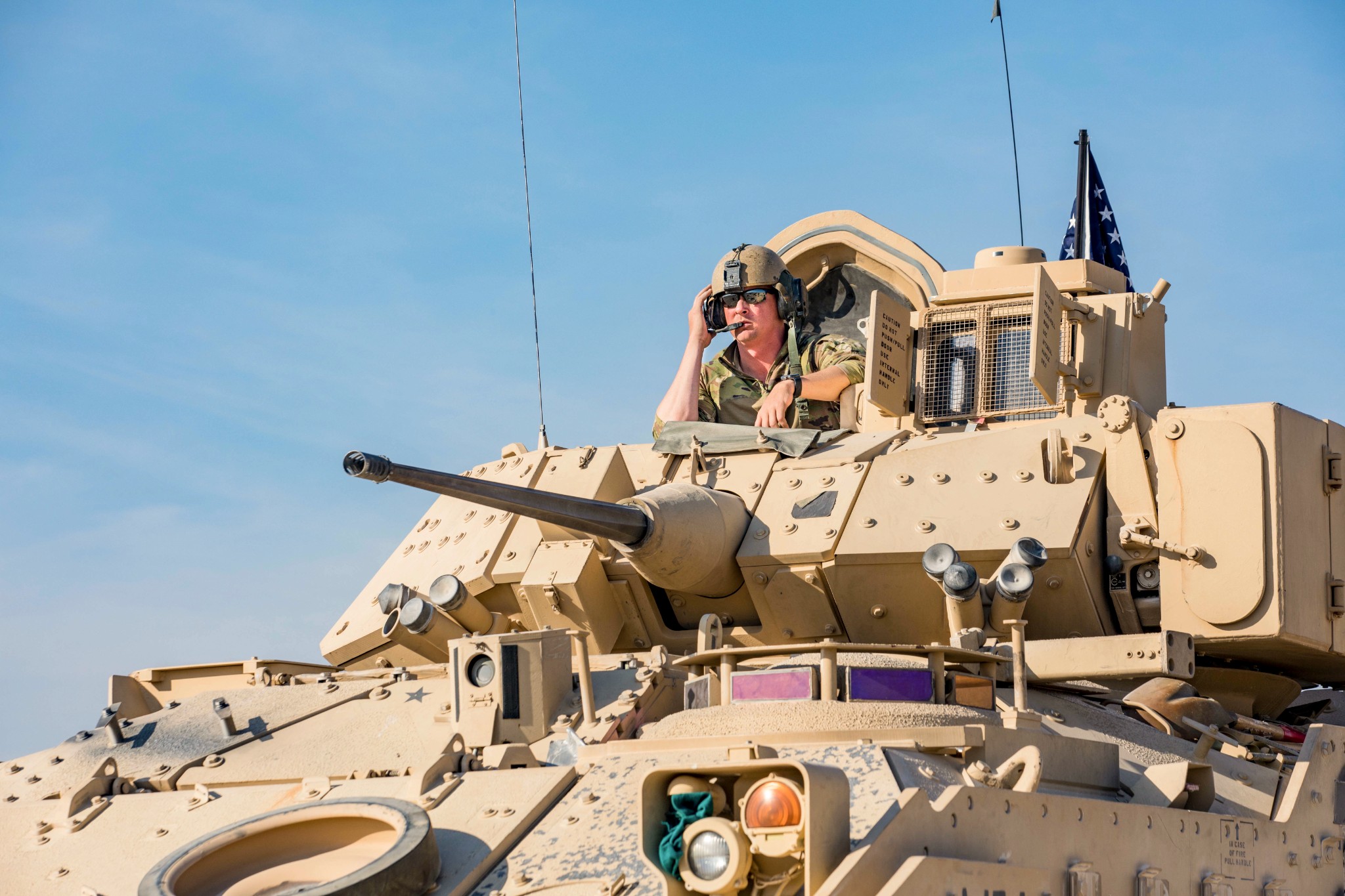 U.S. Soldiers in the 4th Battalion in Syria, November 11, 2019. Image Courtesy Department of Defense.
U.S. Soldiers in the 4th Battalion in Syria, November 11, 2019. Image Courtesy Department of Defense.
ISIS-K’s Threats to South-Central Asian Security
On March 22, at least 133 individuals were shot and killed at the Crocus City Hall in Moscow, Russia by four individuals in the deadliest terrorist attack on Russian soil in over two decades. The Islamic State of Iraq and Syria – Khorasan (ISIS-K), a regional branch of the Islamic State active in South-Central Asian countries like Afghanistan, subsequently claimed responsibility for the attack.
Through small-scale militia violence and large-scale terrorist attacks, ISIS-K presents a unique threat to South-Central Asian stability. Although the Islamic State was territorially defeated, its influence is spreading through asymmetric warfare seeking to destabilize regional and international power players.
ISIS-K, Explained
ISIS-K was formed in 2015 as a splinter group interdependent with ISIS’ central command in Iraq and Syria. As the Islamic State lost territory through the mid to late-2010s, Islamic State leadership increasingly concentrated on South-Central Asia as its base for a global caliphate and endorsed ISIS-K’s expansion into the region. The Islamic State further invested significant financial capital to facilitate the relocation of key operatives to ISIS-K and fortify the group’s weapons exchange and communications networks.
ISIS-K members seek to establish a fundamentalist global caliphate against what they view as foreigners and corrupt imperialist governments in the East and West. The group is particularly opposed to groups like the Afghan Taliban based on sectarian differences. ISIS-K subscribes to Jihadi-Salafism ideology, whereas the Taliban adheres to a Sunni Islamic school called the Hanafi madhhab that fighters see as deficient. In further contrast to the Taliban’s nationalist aims to maintain control over the Afghan government, ISIS-K seeks to assert its power by adapting to local political conditions and launching asymmetric attacks.
The ISIS-K Militia: Asymmetric Warfare in South-Central Asia
One mechanism ISIS-K utilizes to execute asymmetric attacks is through its localized militia.
According to the Center for Strategic and International Studies Transnational Threats Project, the group maintains a fighting force of between approximately 600 and 800 militants as of October 2018. Although the size of the militia decreased from between 3,000 and 4,000 militants in 2016, ISIS-K has streamlined its operations to focus on localized warfare. This readjustment occurred as the group came under significant military pressure from the Taliban, the Afghan government, and the North Atlantic Treaty Organization (NATO). In July 2018, Taliban forces defeated ISIS-K in the northern province of Jawzjan, a loss that would be followed by the surrender of 1,400 militants to Afghanistan or NATO from October 2019 to March 2020.
Despite these losses, ISIS-K’s remaining militia terrorizes communities and sows instability. Between 2017 and 2018, the militia executed 84 attacks in Afghanistan and 11 attacks in Pakistan, with the highest levels of militia violence concentrated in Kabul and Nangarhar. ISIS-K managed to mount 115 total attacks between April 2020 and March 2021, with a significant portion of these attacks committed by the militia. The militia often targets local governmental bodies during times of political transition to subvert local authorities and reassert power. During the 2018 Afghanistan parliamentary elections, the militia warned citizens in Nangarhar against “approaching election centers” and recommended that they “stay away from them… to safeguard their blood, as these are legitimate targets for us.”
ISIS-K Mass Terrorist Attacks
ISIS-K further engages in asymmetric warfare through mass terrorist attacks.
Since the mid-2010s, the group has attracted many foreign terrorist fighters (FTFs) in the region. Through its increasing global prestige and vast resource networks throughout South-Central Asia and the Middle East, ISIS-K enables its militants to amass arms to carry out mass-casualty terrorist attacks. These attacks often occur during periods of geopolitical vulnerability to demonstrate the power of the group’s ideology, organizational strength, and desire to remake the region in its image.
One such attack occurred at the Hamid Karzai International Airport in Kabul, Afghanistan on August 26, 2021. Amidst the U.S. military and NATO withdrawal from Afghanistan and the Taliban’s overthrow of the Afghan government, an ISIS-K suicide bomber infiltrated the airport and detonated an explosive belt. Militants subsequently opened fire on American soldiers and crowds of local and foreign civilians waiting to be evacuated. At least 183 people were killed in the attack, including around 170 Afghan civilians and 13 American soldiers.
Conclusion
Through militia violence and mass terrorist attacks, ISIS-K seeks to upend regional order in hopes of fulfilling its objective of establishing a caliphate. As the Moscow attack demonstrates, the threat the group poses to the region remains even as its membership decreases. American policymakers should continue to closely monitor the group’s activities moving forward to prevent a larger ISIS resurgence.






